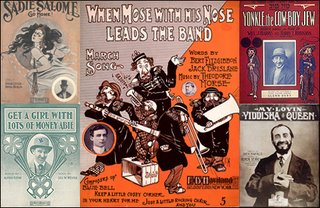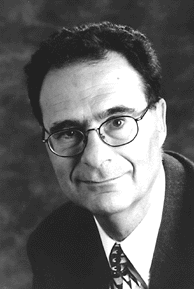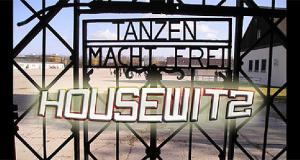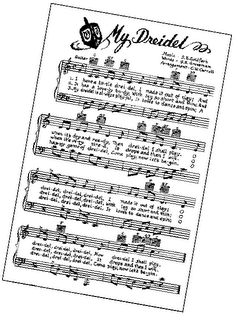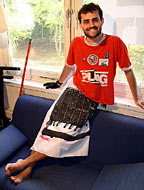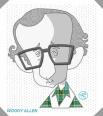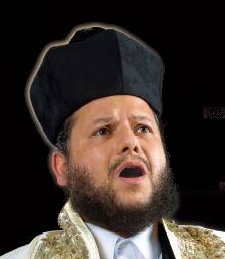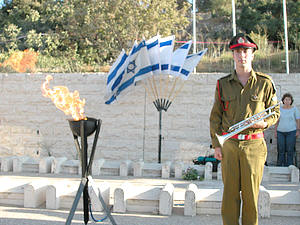
Emerging From the Shadows A Visit to An Old Jewish Community
The Jews of Venta Prieta say their ancestors accomplished the impossible -- they remained Jews throughout the Inquisition, even though they had no synagogue and no rabbi to instruct them during the long centuries of hiding.
BY ALISON GARDY
It is easy to miss Venta Prieta. There is no welcome sign, no landmark visible from the road. It appears at first to be nothing more than a cluster of small stores, unpaved streets, and low flat houses hiding among the dry brown and yellow hills on the outskirts of the old mining city of Pachuca in central Mexico. But visitors keep coming -- journalists, anthropologists, curiosity seekers. If it could choose, Venta Prieta would remain anonymous. Go away, say a man's eyes when a visitor asks if she is in the right place. Leave us alone. And then with words, We are not objects in a museum.
Founded in the 1850s, this small Mexican community lived through its first century guarding a deep secret -- its Jewish identity. Its founders and most of its inhabitants were descendants of families who had spent 300 years hiding in Mexico's mountains after escaping the Spanish Inquisition. The community's founders, a couple named Téllez, settled in Venta Prieta when it was just an outpost, a ghostly presence that came to life with the visit of the occasional traveler. Today the village sits in the shadow of a giant new shopping mall across the road, and its secret has been out in the open for 30 years. But secrecy is an old habit, a vestige of a survival skill that kept the community alive for centuries.
The story really begins with the expulsion of the Jews and Muslims from Spain in 1492, during the Spanish Inquisition. The Holy Office of the Inquisition, established by King Ferdinand and Queen Isabella in 1478, had already burned thousands of Jews at the stake in the decade before the expulsion decree. In the half century following the expulsion, roughly a third of Spain's Jews were burned at the stake, a third fled, and another third were forcibly converted to Catholicism. Of those who converted, many maintained Jewish customs in private.
Many Jews left Spain on ships bound for the New World, where they hoped the Inquisition would be less severe. So many took this path of survival that by 1550 almost 25% of Mexico City's Spanish population was known to be Jewish, and the community had its own Grand Rabbi. The number might have been even larger, since many Jews disguised themselves as Catholics.
"The great majority of Mexicans today have Jewish blood, though very diluted," says Orthodox Rabbi Jan Knippers Black is a professor of International Policy Studies at the Monterey Institute of International Studies in California. Abraham Bartfeld of Mexico City.
New Spain was not the haven Jews imagined. In fact, the Inquisition there lasted longer than it did in Spain, where it was finally suppressed in 1808. In Mexico, the Spanish authorities established a Tribunal of the Inquisition in 1571 which existed until the colony's War of Independence in 1821. During the war, the Inquisition accused the revolutionary priest José Marίa Hidalgo y Costilla, the father of Mexican independence, of practicing Judaism, among other "crimes." By then the Inquisition had become so despised by the general population that it was commonly referred to as the "Unholy Office."
Historians have generally contended that Mexico's colonial Jewish population was either wiped out or converted. But the Jews of Venta Prieta say their ancestors accomplished the impossible -they remained Jews throughout the Inquisition, even though they had no synagogue and no rabbi to instruct them during the centuries of hiding. In the last 50 years, they have built their own temple, bought their own Torah, and, in keeping with biblical tradition, have had an eternal flame of olive oil -- which requires constant attention-burning inside the temple.
But Mexico's orthodox rabbinate, wary of the long centuries that the Inquisition's refugees spent underground, disputes Venta Prieta's claim that it is Mexico's oldest Jewish community. "They can't prove their ancestry goes back to colonial times," says orthodox Rabbi Bartfeld. While he admires their "spirituality," Rabbi Bartfeld considers the heritage of the people of Venta Prieta to be as much Catholic as Jewish. He believes the only legitimate Jews in Mexico today are twentieth-century immigrants from Europe and North Africa and their descendants.
Mexico's entire Jewish population numbers about 50,000.








